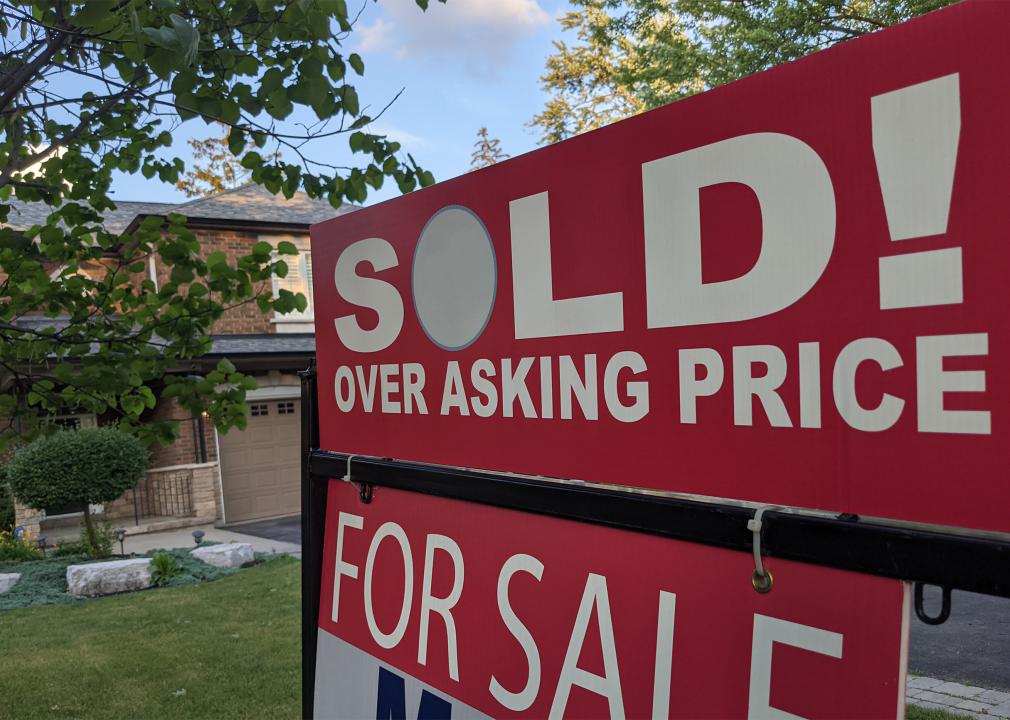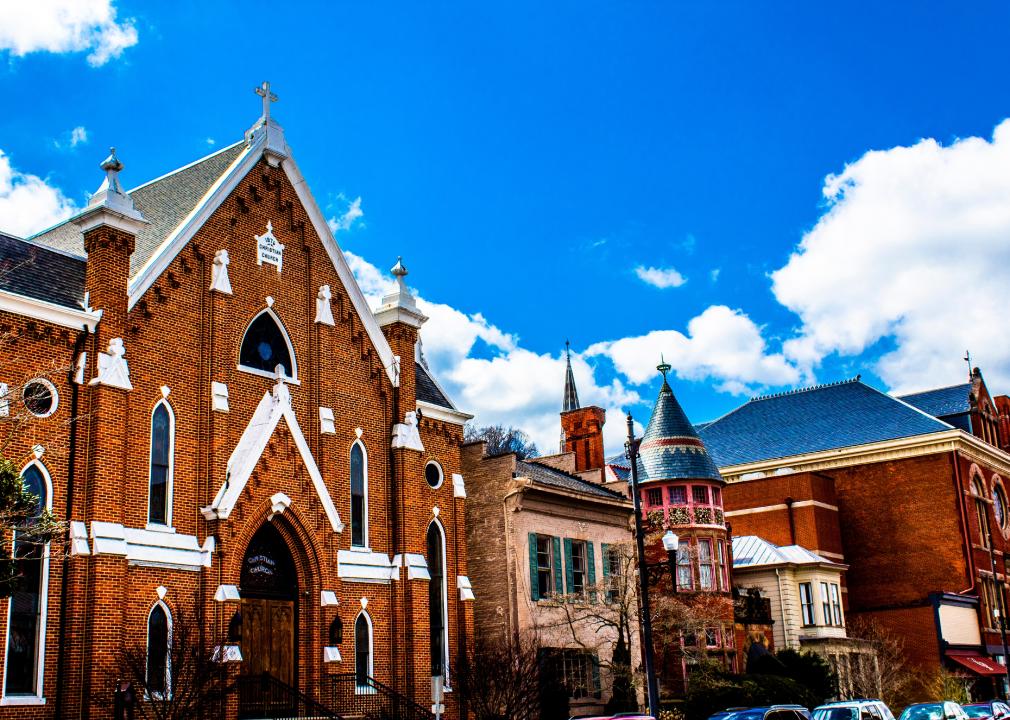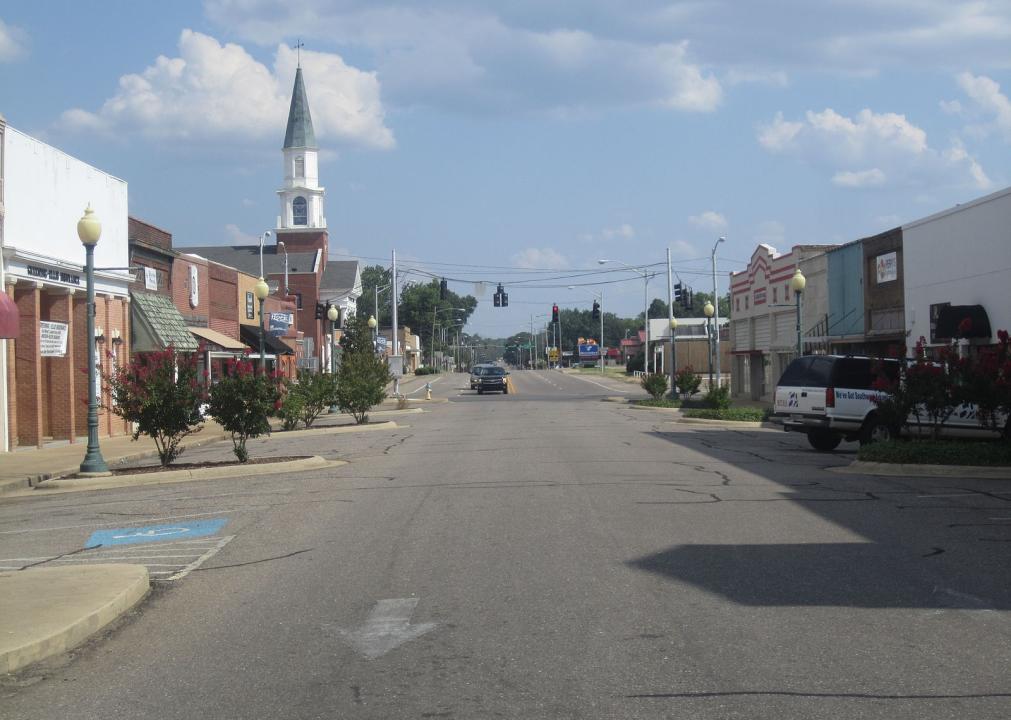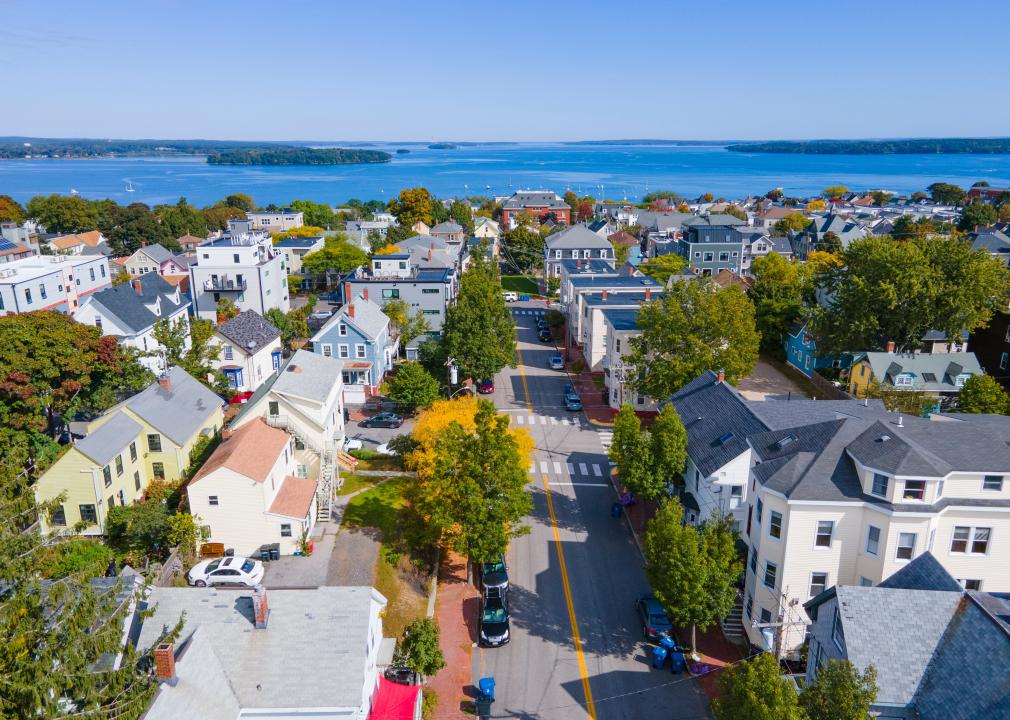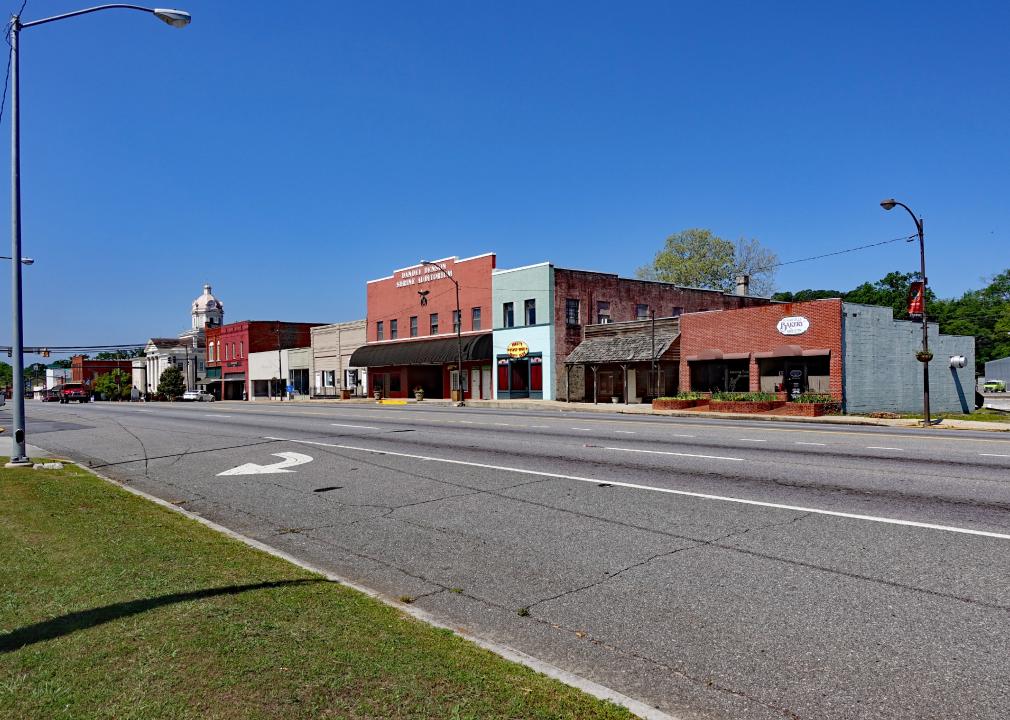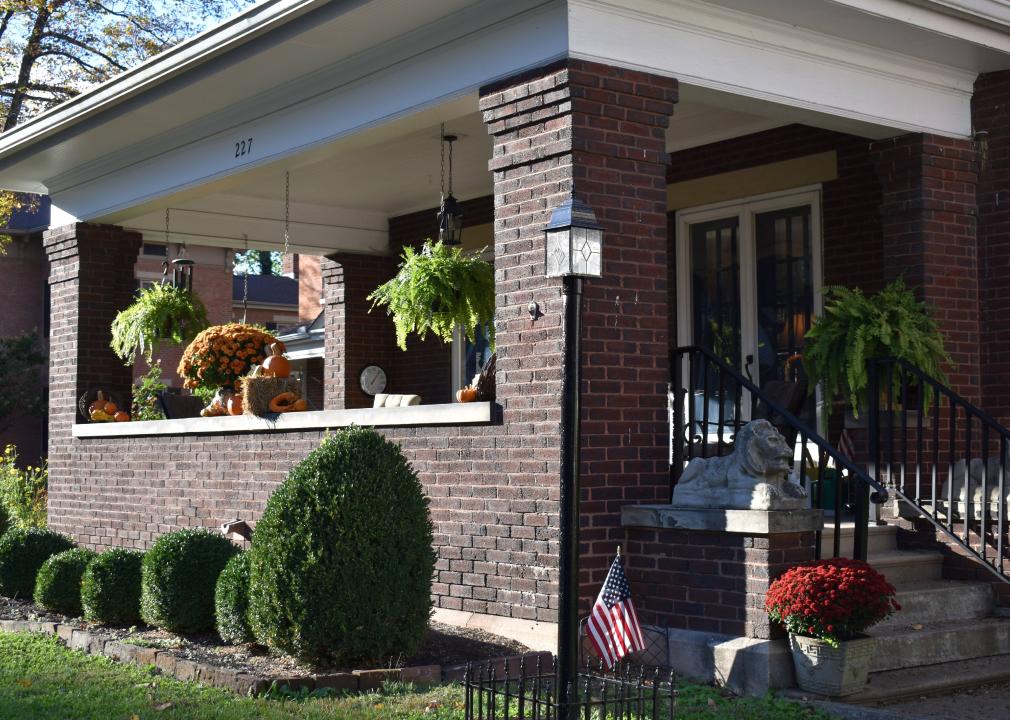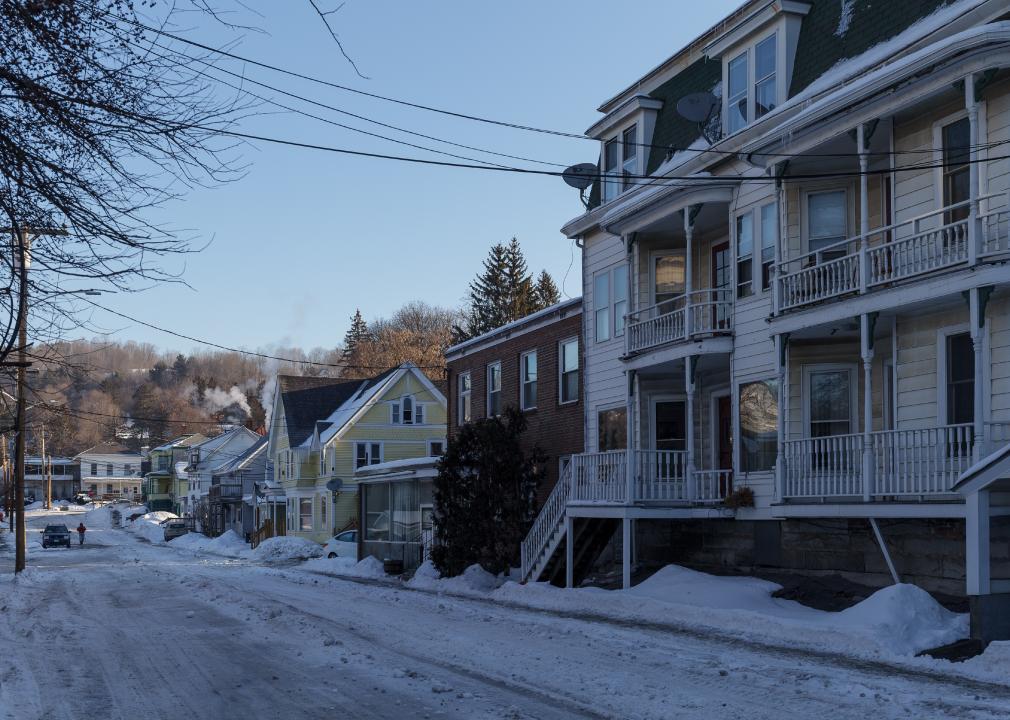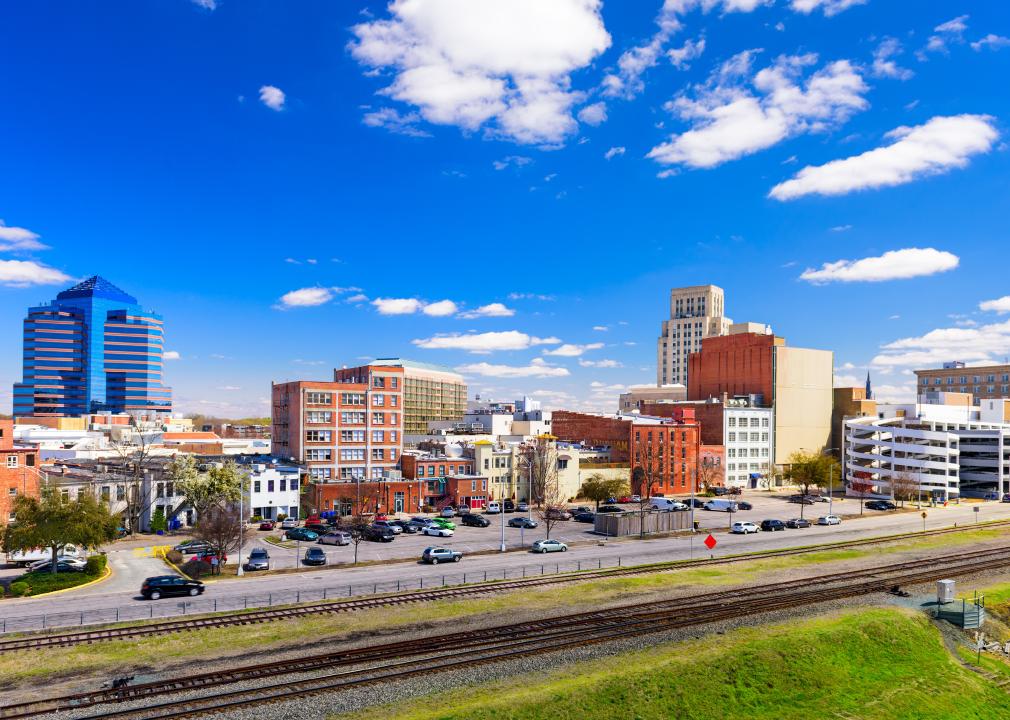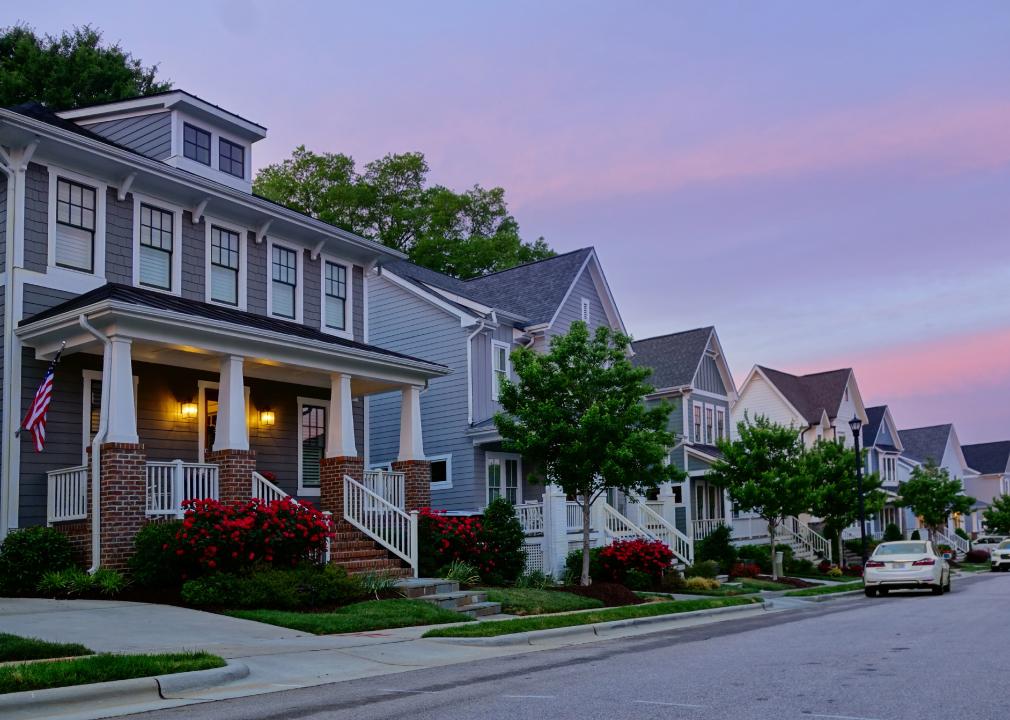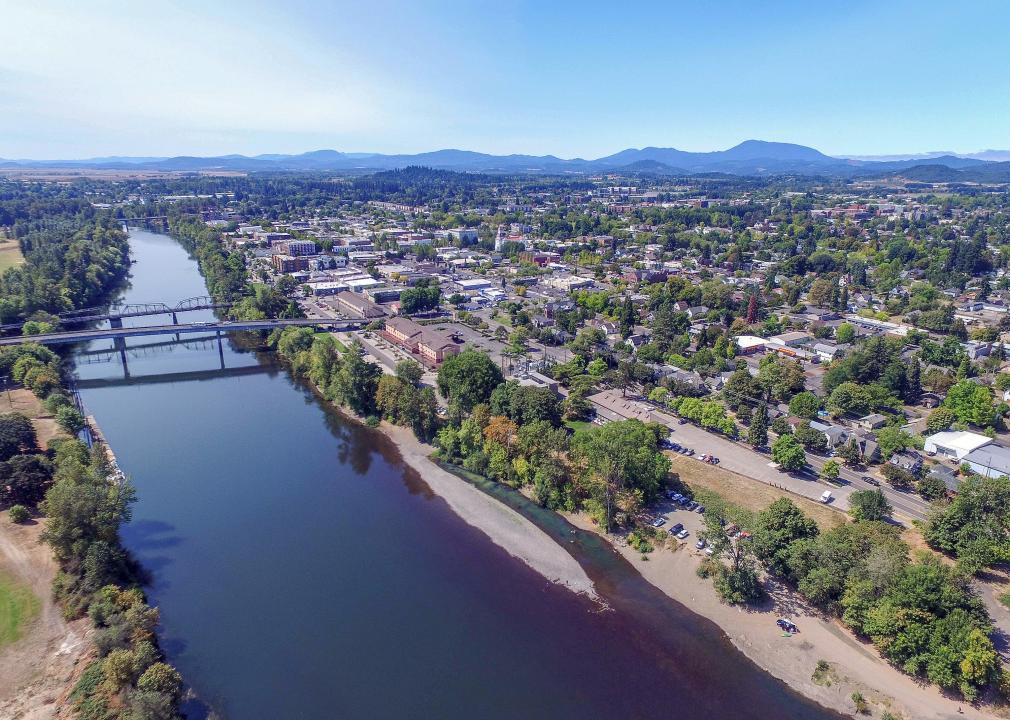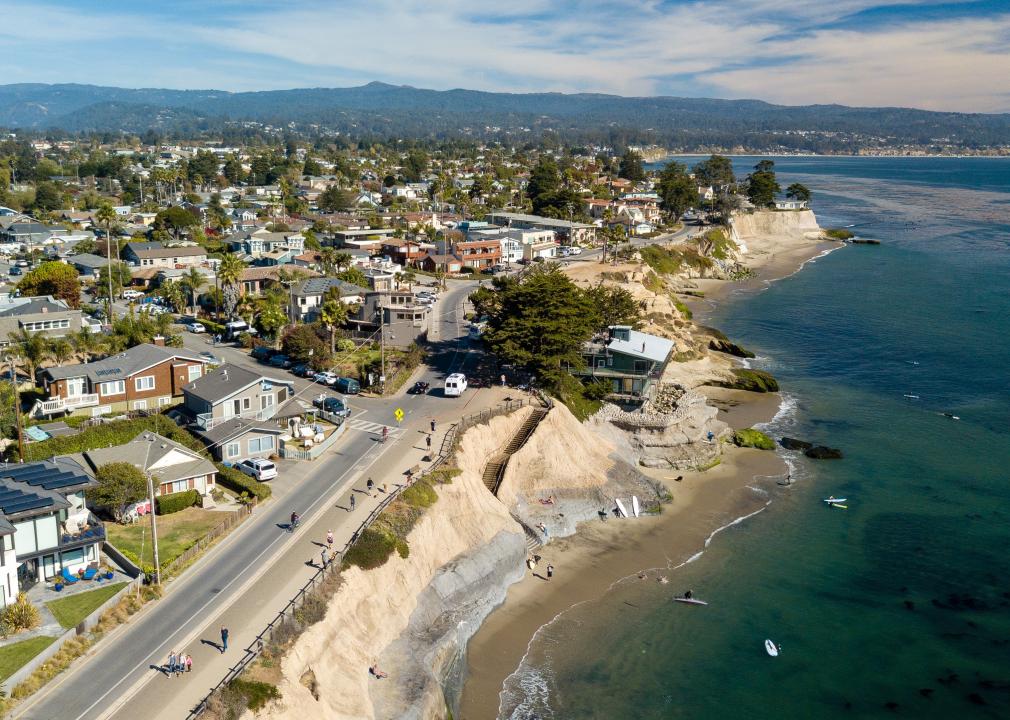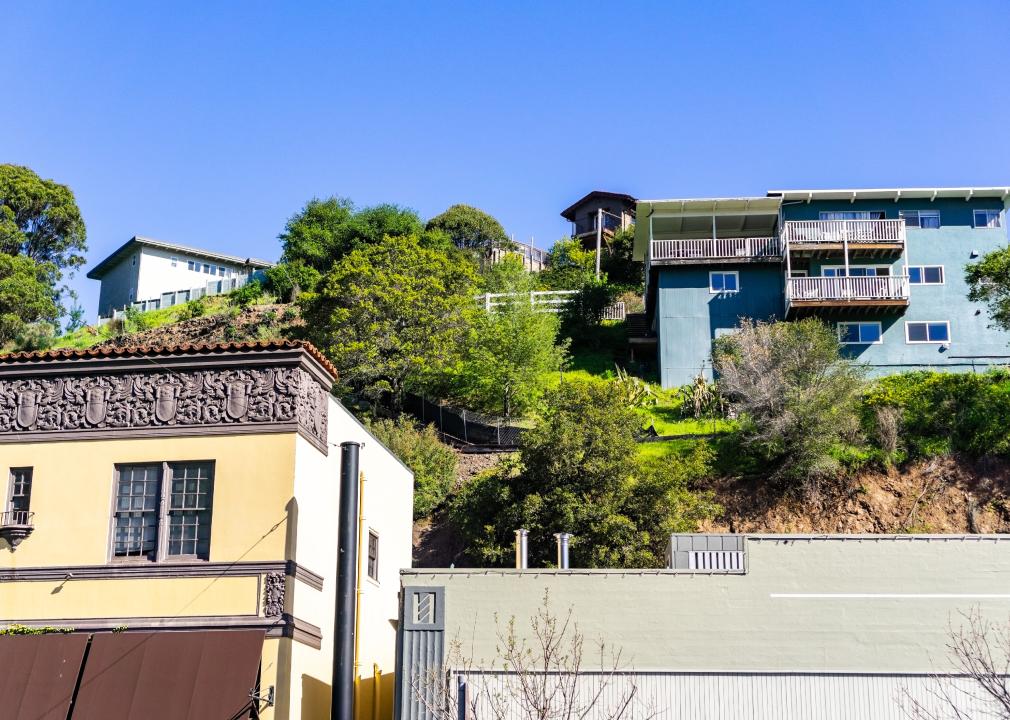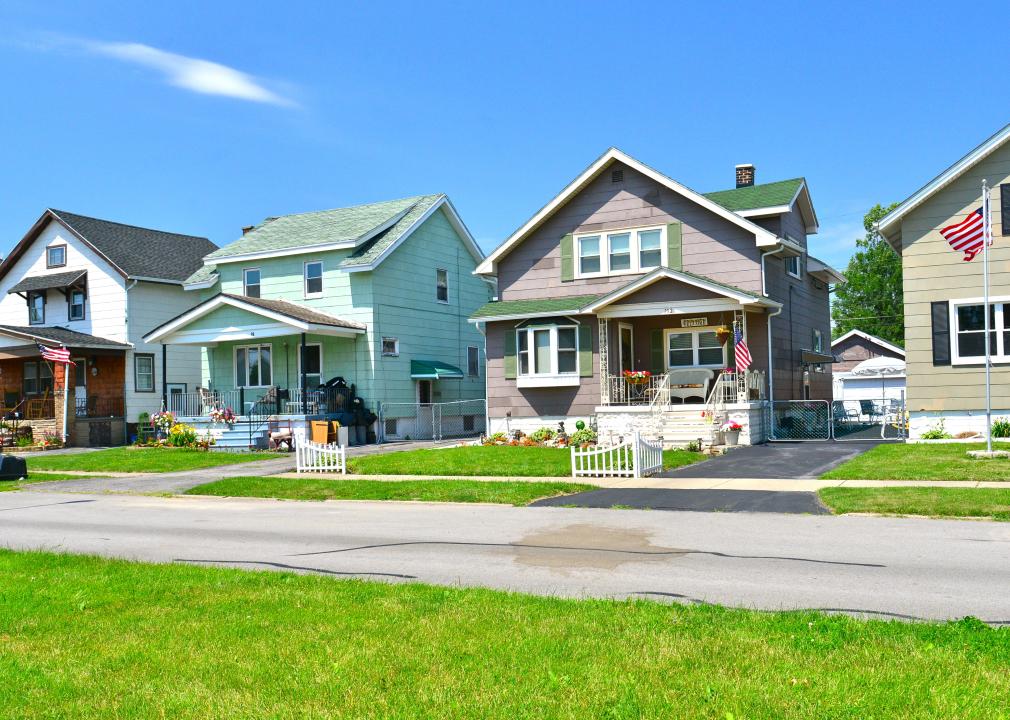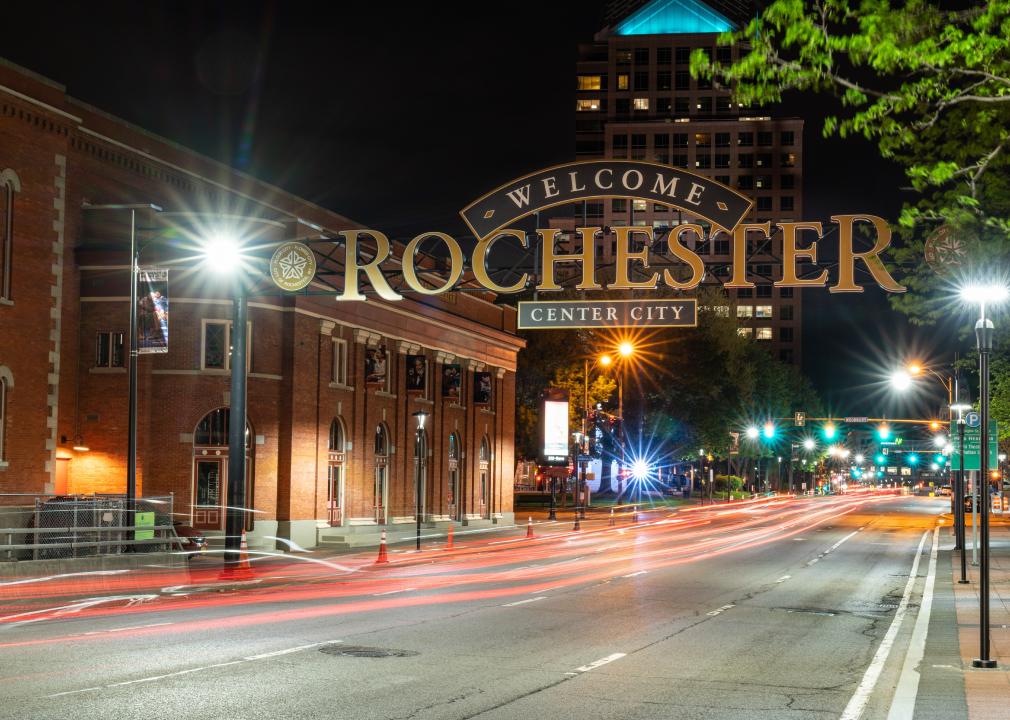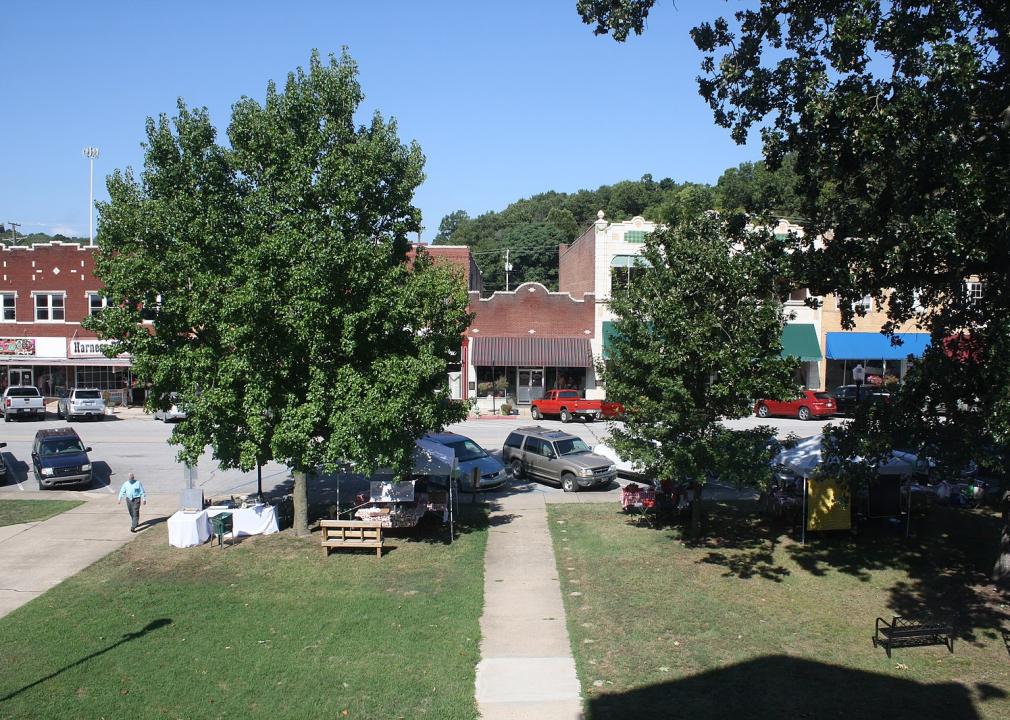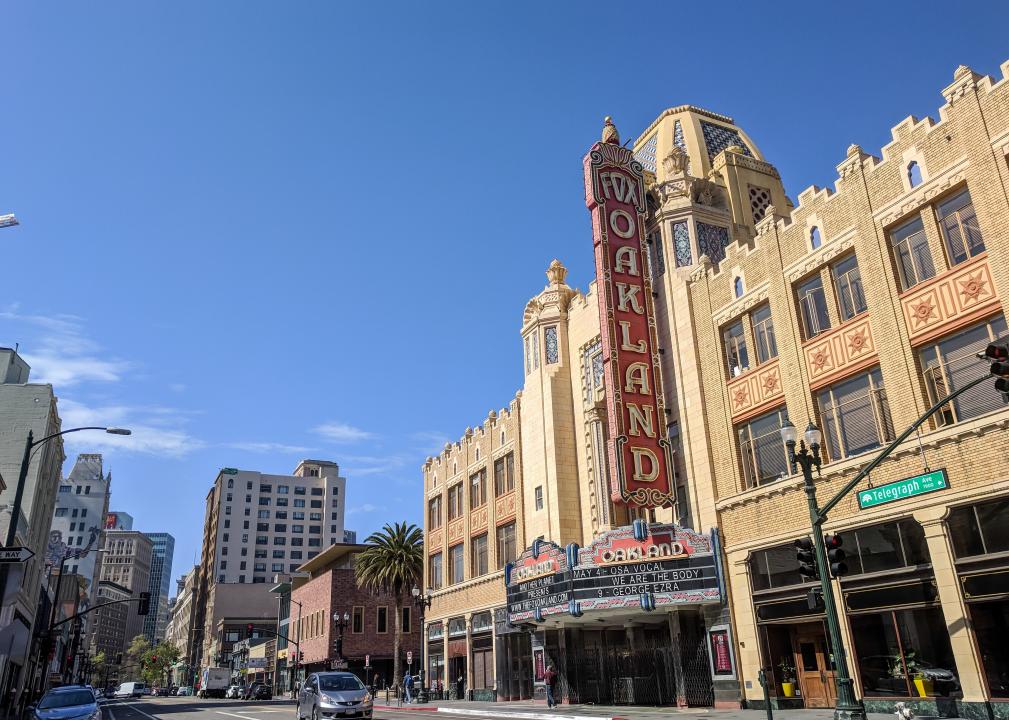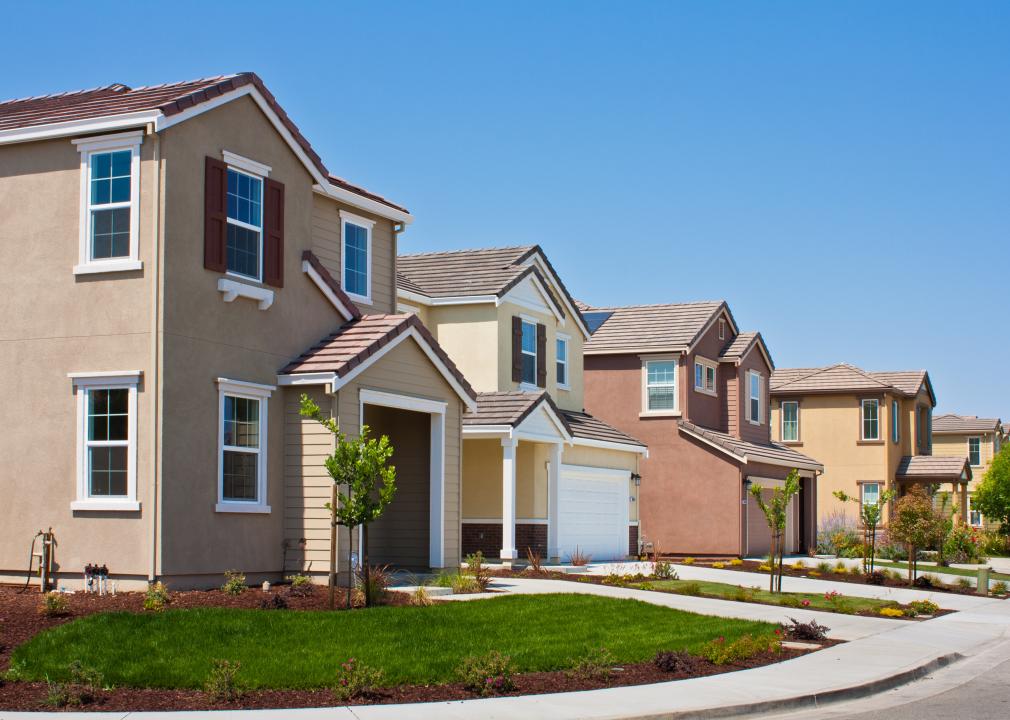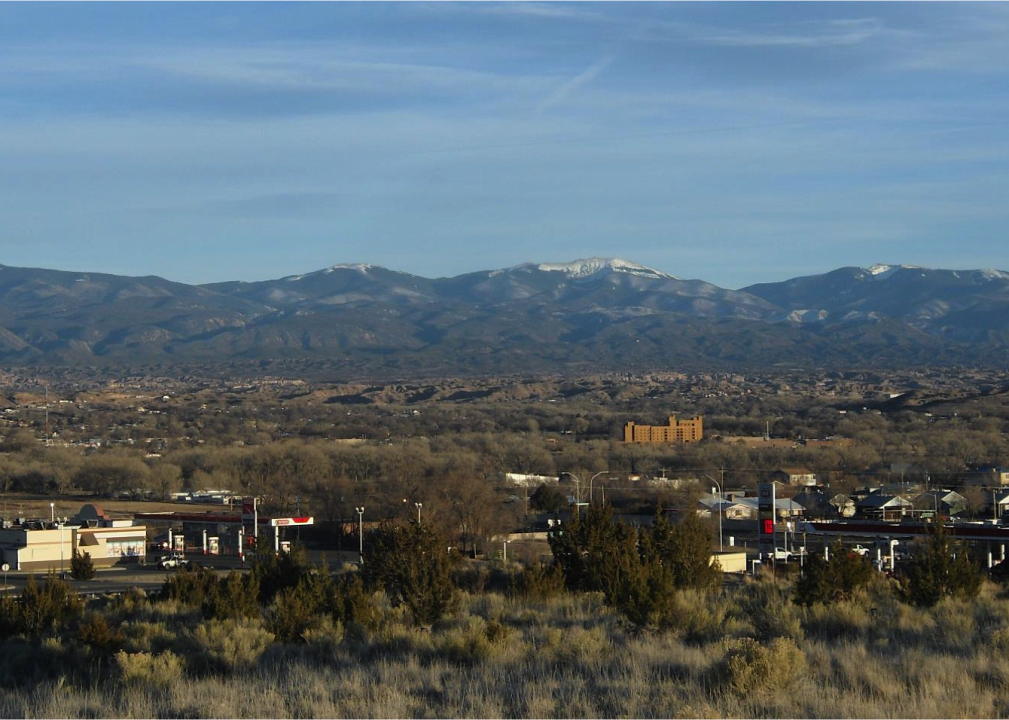Metros with the biggest jump between list and sale prices
Elena Berd // Shutterstock
Metros with the biggest jump between list and sale prices
It’s no secret that the housing market has been in the midst of an upheaval over the past couple of years. Sellers had to be open to working with buyers on the sale prices of their homes just a few years ago or face long waits for the sale of those homes. But the pandemic has had a massive impact on the housing markets in small towns, large cities, and everything in between.
With interest in homeownership high, many current and potential residents have seen the soaring cost of homes become even more competitive—or even out of reach—in rural markets and mid-sized Midwestern cities alike. Affordability has always been a challenge in large cities for low- to moderate-income buyers, and many metropolitan areas continue to see prices and cost of living rise to new highs.
Across the nation, homes now sell for well over the asking price—and in many cases, it’s due to housing shortages. Most markets simply don’t have enough housing inventory to meet the demand. Other factors, like widespread supply chain issues that are driving up the price of construction materials, are only adding to the issue.
What metros are seeing the biggest jumps between list and sales prices? Why are these issues occurring in these areas? Better Mortgage, an online lender and homeownership platform with a free mortgage calculator, analyzed housing data from the Redfin Data Center to rank every metro based on the highest average ratio between the list price and the sale price of each home sold in the metro, or the average sale-to-list ratio. If this ratio is above 100%, the homes in the metro sold for more than their list price. If it’s less than 100%, the homes sold for less than their list price.
The top 20 metros with the highest average sale-to-list ratios were selected for the list, with the number of homes sold in the metro being the tiebreaker. The data also looked at how many homes were sold above the asking price and the median sale price of homes when available. Data from November 2021, the most recent available, is covered.
![]()
Corey B Stevens // Shutterstock
#20. Maysville, Kentucky
– Average sale-to-list ratio: 102.6%
– Homes sold in November 2021: 5
— Homes sold above asking price: 40%
— Median sale price: data not available
Housing inventory has been limited in the tiny town of Maysville, Kentucky, over the past couple of years. As mortgage interest rates declined to record lows at the start of the pandemic, interest in property purchases skyrocketed in markets across the nation. This led to homes being snatched up quickly in towns like Maysville, where typically there are fewer than a handful of homes listed for sale. New construction is low, so buyers in Maysville often need to compete for higher and higher offers for existing homes, which has caused the sales prices to jump well above the list prices.
Billy Hathorn // Wikimedia Commons
#19. Hope, Arkansas
– Average sale-to-list ratio: 102.7%
– Homes sold in November 2021: 4
— Homes sold above asking price: 50%
— Median sale price: $109,000
The population in Hope, Arkansas, has declined significantly over the past decade, but the housing prices have followed a different trend. While the town of Hope may not be attracting a ton of new residents, it is attracting homebuyers who are willing to pay much higher than the asking price—and it’s due to a significant lack of for-sale inventory coupled with low interest rates. Historically, the home prices in this town have also been very low compared to the national average, so there was more room for above-asking offers from buyers who were eager to snag a home purchase during the pandemic buying frenzy.
Wangkun Jia // Shutterstock
#18. Portland, Maine
– Average sale-to-list ratio: 102.7%
– Homes sold in November 2021: 805
— Homes sold above asking price: 55.4%
— Median sale price: $400,000
During the pandemic, the state of Maine gained more new residents than nearly any other state—and this growth affected the Portland-South Portland metro area in particular. As the fastest-growing city in the state, the influx of new residents to Portland, Maine, put a strain on the housing market. Buyer demand quickly outpaced the available inventory, and buyers who wanted to land contracts on properties were forced to offer over-asking to compete. This caused the property sales prices to surge well above the list prices in Portland—which was a favorable scenario for sellers, but was not as ideal for potential buyers with limited cash reserves.
Thomas Barrat // Shutterstock
#17. Summerville, Georgia
– Average sale-to-list ratio: 102.8%
– Homes sold in November 2021: 16
— Homes sold above asking price: 43.8%
— Median sale price: $176,000
The small town of Summerville, Georgia, has seen dwindling population numbers in recent decades, but its proximity to Chattanooga, Tennessee turned it into a hot spot for real estate. In 2020, as home prices skyrocketed in Chattanooga—located 40 miles away—buyers turned to more affordable areas like Summerville to purchase real estate instead. But with just under 4,500 residents, the small town of Summerville didn’t have a ton of available home inventory to offer buyers—new construction or otherwise. This inventory shortage led buyers to offer much higher purchase prices than asking for the homes that were available—which drove up the sales prices to new heights.
Yana Smith // Shutterstock
#16. Chillicothe, Ohio
– Average sale-to-list ratio: 102.8%
– Homes sold in November 2021: 24
— Homes sold above asking price: 58.3%
— Median sale price: $171,000
During the pandemic, the small city of Chillicothe, Ohio, saw a surge in out-of-state buyers looking for affordable properties and outdoor amenities. The uptick in non-local buyers, coupled with record-low interest rates, helped to put a strain on the housing market in Chillicothe in 2021. Housing was also extremely pricey and limited in central Ohio cities like Columbus during this time, which led buyers to turn to cities like Chillicothe for more affordable options. In turn, the available housing inventory was depleted, which meant that buyers who wanted to increase the chances of snagging a home had to make higher offers to compete.
Jennifer Yakey-Ault // Shutterstock
#15. Lewiston, Maine
– Average sale-to-list ratio: 102.8%
– Homes sold in November 2021: 146
— Homes sold above asking price: 70.5%
— Median sale price: $244,000
During the pandemic, Lewiston saw an uptick in interest from local and out-of-state buyers as more people relocated to Maine. Lewiston, the second-largest city in the state after Portland, saw its home inventory shrink as demand soared. Like many other towns and cities on this list, the limited supply forced buyers to compete with larger and larger offers for the homes that were available, which caused the drastic difference between list and sales price in this city.
yegorovnick // Shutterstock
#14. Barre, Vermont
– Average sale-to-list ratio: 102.9%
– Homes sold in November 2021: 78
— Homes sold above asking price: 46.2%
— Median sale price: $303,000
Vermont had been dealing with a housing shortage and skyrocketing property prices well before the pandemic. However, the recent pandemic-fueled buying frenzy—coupled with an unexpected population boom—is what tipped the skyrocketing home sales prices into overdrive in the city of Barre, Vermont. Located in the Barre-Montpelier metro, Barre became a hot spot for new residents, which added more pressure to the strained housing market. With limited housing inventory in the area, buyers had to make big offers to sellers to secure contracts on housing, which caused a massive jump between the list and sales prices in this area.
Sean Pavone // Shutterstock
#13. Durham, North Carolina
– Average sale-to-list ratio: 102.9%
– Homes sold in November 2021: 931
— Homes sold above asking price: 55.2%
— Median sale price: $390,000
Durham has grown massively over the past decade—and the pandemic only helped push more residents toward this North Carolina city. But as new residents flocked to Durham in 2021, the housing inventory in the area became strained—despite the attempts to meet the needs. With demand outweighing supply, bidding wars among buyers became common in neighborhoods across the city. This drove up the home purchase prices in Durham well above the list prices—and priced out many would-be buyers in this city.
zimmytws // Shutterstock
#12. Raleigh, North Carolina
– Average sale-to-list ratio: 103.2%
– Homes sold in November 2021: 2,394
— Homes sold above asking price: 59.2%
— Median sale price: $396,000
The city of Raleigh, which is located in the Raleigh-Durham metro area of North Carolina, has faced similar issues to its counterpart. High rates of new residents flocked to this area in 2021, which put a strain on the already stressed housing market. A shortage of housing occurred, even as new housing inventory was being added to the mix. With the demand for housing outweighing supply, buyers in Raleigh were forced to shell out top dollar for offers well over asking price. This caused the discrepancy between the list price and the sales price in this area, and priced out even more residents in the Raleigh-Durham area.
cpaulfell // Shutterstock
#11. Corvallis, Oregon
– Average sale-to-list ratio: 103.5%
– Homes sold in November 2021: 92
— Homes sold above asking price: 58.7%
— Median sale price: $500,000
The college town of Corvallis, Oregon, was already dealing with a housing shortage before 2021, and a recent population boom only added to it. With more residents flocking to the area, the housing inventory was further strained by the high rates of pandemic-fueled buying that have occurred over the past year. Low rates of new construction have also contributed to the demand, far outweighing supply in Corvallis. In turn, buyers are regularly engaging in bidding wars to land contracts on available properties, which are driving up the sale prices in this area.
WATimmer // Shutterstock
#10. Santa Cruz, California
– Average sale-to-list ratio: 103.8%
– Homes sold in November 2021: 208
— Homes sold above asking price: 62.5%
— Median sale price: $1,050,000
The population in Santa Cruz, California, has declined over the past year, but that hasn’t freed up housing options in this area. An ongoing housing shortage in Santa Cruz has caused some serious competition among buyers who want to purchase property in this northern California city. Other factors, like the demand for rental housing by students from the University of California Santa Cruz, have made this area an investor’s paradise. That means cash offers in Santa Cruz are king—and anyone who wants to snag a home in the area has to come with cash, and lots of it, to compete with other buyers for the limited inventory.
CK Foto // Shutterstock
#9. Seattle
– Average sale-to-list ratio: 104.1%
– Homes sold in November 2021: 4,495
— Homes sold above asking price: 55%
— Median sale price: $715,000
Unlike many other large metros across the nation, Seattle did not have an exodus of residents during the pandemic. In fact, this city continued to see throngs of new residents move to the area throughout the past year. As more residents poured into Seattle, it added more weight to an already strained housing market. New construction rates have not kept up with the uptick in demand, either—which means there’s limited inventory for buyers in this area. As such, many of the buyers who want to purchase a home in Seattle have to offer above-asking for the available properties, which has caused the median sales price to far surpass the list price in the area.
Sundry Photography // Shutterstock
#8. San Rafael, California
– Average sale-to-list ratio: 104.6%
– Homes sold in November 2021: 266
— Homes sold above asking price: 56.4%
— Median sale price: $1,325,000
A lack of new construction and strict zoning regulations in San Rafael, California, have kept inventory scarce in this North Bay town, even with nearly a quarter of residents exiting the area’s high housing prices in early 2020. However, new buyers and investors pouring into this coastal town over the past year have kept available home prices at a premium—and buyers are offering prices well above listing as they bid for contracts on existing homes.
Richard Cavalleri // Shutterstock
#7. Buffalo, New York
– Average sale-to-list ratio: 105.6%
– Homes sold in November 2021: 1,087
— Homes sold above asking price: 64.4%
— Median sale price: $210,000
The upstate city of Buffalo, New York, has been a hot spot for new residents over the past three years, which has caused the area’s housing inventory to dwindle. Its housing market became even more strained in 2021, as the area experienced both an uptick in pandemic-fueled buying and an unexpected population boom that brought tons of new residents to the area. Due to the lack of housing, current owners aren’t listing their homes for sale at high rates, either, which is contributing to the issue. With a severe shortage of home inventory to choose from, buyers in Buffalo are forced to up the ante and make offers that are well above list price to compete.
Paul Brady Photography // Shutterstock
#6. Rochester, New York
– Average sale-to-list ratio: 105.7%
– Homes sold in November 2021: 1,076
— Homes sold above asking price: 64.7%
— Median sale price: $183,000
Unlike Buffalo, the city of Rochester, New York, did not see an uptick in new residents due to the pandemic. However, it did see a swift uptick in buyers, who were eager to capitalize on the purchase of affordable housing in this area. While that allowed early buyers to snag deals on housing in Rochester, it also caused a shortage in housing inventory. Many homeowners in this area also opted to stay put in their homes rather than sell—so home inventory has stayed low since 2020. The homes that are listed for sale in Rochester are getting snatched up at record pace, which means that any buyer who wants to buy a home in this area has to move quickly and offer loads of money over asking price to compete.
Brandonrush // Wikimedia Commons
#5. Harrison, Arkansas
– Average sale-to-list ratio: 105.8%
– Homes sold in November 2021: 11
— Homes sold above asking price: 45.5%
— Median sale price: $120,000
The city of Harrison, Arkansas, hasn’t seen a huge population boom in recent years, but it has grown steadily over the past decade. Unfortunately, the rate of new construction housing hasn’t kept up with that growth, which has caused the housing inventory to dwindle in this small Arkansas city. When the surge in pandemic buying took hold, local and out-of-state buyers opted to capitalize on the low interest rates and the very affordable housing in this area. In turn, a housing shortage occurred—and buyers are now forced to offer purchase prices that are well above asking to secure a contract on a home.
eddie-hernandez.com // Shutterstock
#4. Oakland, California
– Average sale-to-list ratio: 107.3%
– Homes sold in November 2021: 2,840
— Homes sold above asking price: 76.7%
— Median sale price: data not available
The population in Oakland, California, has exploded in recent years and it has caused a demand for housing that is unprecedented in this northern California city. Over the past decade, the population in Oakland increased by nearly 13%—but the rate of new housing grew by just 5.16% during that time. With new construction lagging far behind the population growth, homes are now selling at a premium in this area. In the wake of the pandemic buying frenzy that has occurred over the past couple of years, buyers are now regularly engaging in bidding wars for properties in Oakland, which means that prices are being driven up well above list price in the area.
pbk-pg // Shutterstock
#3. San Jose, California
– Average sale-to-list ratio: 107.5%
– Homes sold in November 2021: 1,553
— Homes sold above asking price: 75.8%
— Median sale price: $1,400,000
As with many other cities in the Bay Area, the city of San Jose, California, has fallen far behind on the construction of new homes for residents, which has driven up the prices in the area and caused a shortage in home inventory. As buyers in this high-priced area attempted to capitalize on record-low mortgage rates during the pandemic, homes became even more scarce—which caused bidding wars and purchase prices that were well above list price on most homes.
Bertl123 // Shutterstock
#2. San Francisco
– Average sale-to-list ratio: 108.3%
– Homes sold in November 2021: 1,332
— Homes sold above asking price: 70.8%
— Median sale price: $1,575,000
San Francisco is well-known for its extremely low housing inventory—even a decrease in residents during the pandemic didn’t help ease the notoriously tight market. Instead, when interest rates fell, savvy buyers capitalized on the cheaper loans by purchasing real estate in this city. This further depleted the home inventory, and the lack of new construction in San Francisco only added to the issue. In turn, bidding wars by buyers drove purchase prices up well above list prices in the area.
Rr0044 // Wikimedia Commons
#1. Española, New Mexico
– Average sale-to-list ratio: 130.8%
– Homes sold in November 2021: 15
— Homes sold above asking price: 6.7%
— Median sale price: $320,000
New Mexico has faced a serious housing crisis during the pandemic, and the small city of Española was hit hard. As part of the Albuquerque-Santa Fe metro area, Española is just 30 minutes from the capital city of Santa Fe—which has experienced a massive population boom and subsequent housing crisis over the past couple of years. In turn, residents who were priced out of Santa Fe have turned to more affordable areas like Española, depleting the already limited housing inventory. As with other areas across the nation, the new construction in Española hasn’t been able to keep up with demand, so buyers are now bidding against each other to win the purchase contracts on existing homes. This has caused a housing boom—and the purchase prices in Española now far surpass the listing prices on homes.
Housing markets across the nation have been hit hard by the events that have occurred over the past couple of years, and it has had a deep—and wide-reaching—impact on home sales prices. Small markets that were once considered affordable are now seeing purchase prices that surpass 100% of the list price. Large markets that have historically been expensive are now even more so due to ongoing demand from buyers. It will be interesting to see how these markets fare over time—and what steps local governments may take to mitigate the damage.
This story originally appeared on Better Mortgage
and was produced and distributed in partnership with Stacker Studio.
